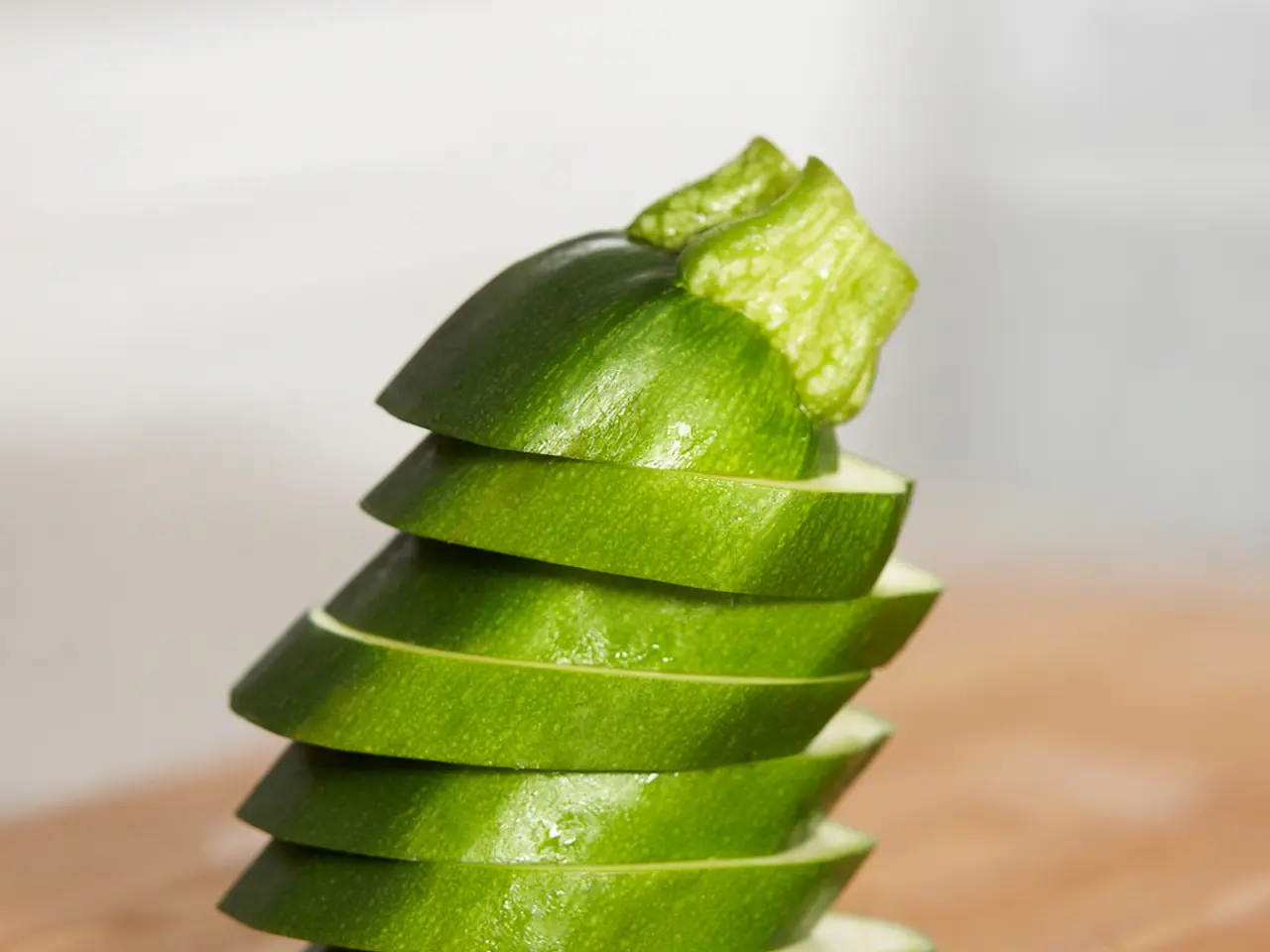Amidst a Series of Cucumber Recall Announcements, Safety Concerns Persist
The Food and Drug Administration (FDA) has been investigating a series of salmonella outbreaks linked to cucumbers, with the most recent one occurring this summer in Boynton Beach, Florida. While the FDA has not identified a wide-ranging persistent issue with Salmonella contamination in cucumbers, it's essential for consumers to understand the risks and take precautions to protect themselves.
Last year, an outbreak was traced to growers in Sonora, Mexico, and another notable one in 2025 was linked to cucumbers grown by Bedner Growers Inc. and distributed nationwide by Fresh Start Produce Inc. These outbreaks have sickened dozens across many U.S. states, prompting FDA recalls of affected cucumber batches.
The reasons for these multiple outbreaks are complex. Salmonella can contaminate cucumbers during growing or handling, through irrigation water, soil, or contact with contaminated surfaces or animal feces on farms. Large-scale distribution also spreads contaminated products to many regions, increasing exposure and the scale of outbreaks. Challenges in detection and reporting may allow contaminated batches to reach consumers before recalls occur.
To minimize the risk, consumers should avoid cucumbers recalled by the FDA, especially those from identified affected growers or distribution periods. It's also crucial to wash cucumbers thoroughly under running water before consumption, even if the cucumber will be peeled. Keeping cucumbers refrigerated and separate from raw meats can prevent cross-contamination, and practicing good hygiene by washing hands, utensils, and cutting boards after handling cucumbers is essential.
High-risk groups, including children under five, older adults, pregnant women, and immunocompromised individuals, should be especially cautious because they are more vulnerable to severe salmonella infections.
It's important to note that while the FDA has not determined a specific source of contamination for the Sonora and Boynton Beach salmonella outbreaks, the source farm for the recall in Florida was Bedner Growers. Contamination can happen during the production chain, including during transportation, preparation, and even in your own kitchen.
The water supply used to irrigate a crop can also lead to contamination if it is itself contaminated. Contamination can happen by contact, such as if produce is loaded into a truck previously used to transport animals or animal products without being cleaned in between. Food contamination can come from numerous sources, including environmental sources, leaky on-site sewage systems, and raw sewage.
The more recent salmonella outbreak this summer came from Boynton Beach, Florida, and in June, a farm in Texas initiated a recall of its cucumbers for possible salmonella contamination. In May, another salmonella outbreak was attributed to cucumbers and was connected to cases of illness in 21 different states.
The 2011 Food Safety Modernization Act established a stronger surveillance system for contaminations, which has helped in investigating these outbreaks. However, it's crucial for consumers to stay informed via FDA or CDC alerts about food recalls and outbreak updates.
Cucumbers pose a slightly unique risk as they are almost always eaten raw, so there's no chance for the bacteria to be killed via cooking. Proper hygiene practices in the kitchen, such as using a clean knife and cutting board, washing hands, and washing fruits and vegetables before preparing them, can help minimize the risk of foodborne illness.
While three salmonella outbreaks from three different sources in the span of about seven months might not necessarily indicate a persistent contamination issue with cucumbers, it underscores the importance of vigilance and adherence to good hygiene practices. The FDA continues to work closely with growers, distributors, and retailers to ensure the safety of the food supply.
- The FDA has been investigating a series of salmonella outbreaks linked to cucumbers, highlighting the importance of environment and health as factors in food-and-drink safety.
- Proper hygiene practices in lifestyle, such as washing hands, utensils, and cutting boards after handling cucumbers, can help minimize the risk of medical-conditions like salmonella infections.
- To protect themselves from cucumber-related salmonella outbreaks, consumers should practice hygiene, wash cucumbers thoroughly, and stay informed about health-and-wellness advisories from the FDA or CDC.
- The environment plays a significant role in the contamination of cucumbers, as Salmonella can enter the food supply through various environmental sources, including irrigation water, soil, and animal feces.




